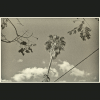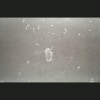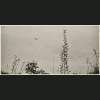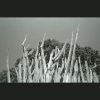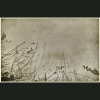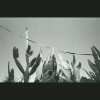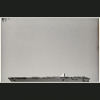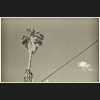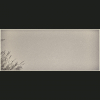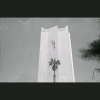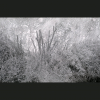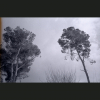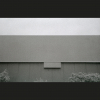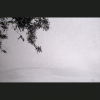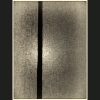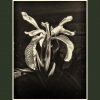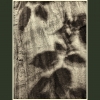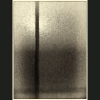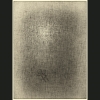One Off
One Off
‘One Off’ is an eclectic body of work with contextualisation done in hind sight.
One Off – ‘Settle For A Little Less’
The chemical treatment I use sculpts physical traces, and layers of depth, into the photographic image – offering a suggestion of past time, whilst invoking acts of remembering. The uncanny experience underlying the illusive time-frame of the photographic image, is juxtaposed with a real sense of the photographic matter, and a notion of an organic passage of time. This is an attempt to create a metaphor for a ‘memory landscape’. It offers a stage curtain and a back drop to an imaginary play of time, places and the act of remembering.
My photography is about ritualizing ways of contemplative seeing. The photographic experience and the photograph as its product, transcend past documentation and provide a meeting place for that which is unseen in my relationship to myself, and the world around me. It is about a states of observation and reflection. The instant of image capture is, therefore, reviewed as both psychological and spiritual peaks. It resonates, inner and outer realities.
One Off – ‘Circus #1’
My photography is about responding to states of presence – linking between inner and outer
landscapes. The instant of image-capture is, therefore, reviewed in terms of both psychological and
spiritual peaks.
Although, initially, involving a controlled intention – the creative process itself is motivated by an authentic
reaction at ‘the decisive moment ‘. This, whilst remaining at a state of observation. At that moment, the
camera is no longer separating the world from the photographer. I call this state a decisive
observation.
In contrast to the cathartic experience of image capture, the photo-chemical treatment applied to the
film negative, later on, involves very little control. Yet, the additional visual surface it produces, presents a physical testimony to the passage of time, and provides an appearance to the unseen.
Its physicality is an interruption to the notion of the eternal present-time arrested in photographs (Barth’s ‘here-then’).
The surface blemishes and traces appear to be etched into what could be experienced as the topology of one’s memory.
Their relation to the captured image provides a translucent curtain – a gateway into a different metaphorical dimension, also offering a contemplative look at the rising unconscious.
One Off – ‘Pictorialism, 2012’
During the late 19th century, Photography was becoming more accessible to the masses.
Its commercial uses were by then also well established – providing photographic products more
people could afford. With the commercialisation of small cameras, all that was required from a user
was to press the button (Kodak offered to do the rest). The appeal of an instantaneous reproduction
technique for capturing the world as we see it, caused a devaluation of Photography as an art medium.
It was at that time that Pictorialism has emerged – mainly in response to the then ongoing debate
whether Photography could be considered an art medium alongside painting. Its members were
using photography to create images, rather than a direct representation of the world facing the
camera. Their photographs conveyed an artistic intention – projecting the photographer’s inner
worlds whilst transforming the photograph from a mere document into a metaphor.
To me, the pictorialistic approach suggests a reflective state of observation and a presence of mind.
All, whilst being attuned to the decisive moment as the shutter is released.
In an era where photography has become a tool for hoarding, indistinctly, digitised fragments of
people’s life, when an artistic intention is a function of the Apps one has on one’s phone, and when
standards for critical assessment revolve around the notion of ‘like’, I retreat and celebrate
Pictorialism.
One Off – ‘Olivia’
The instantaneous event of taking this photograph did not allow even for our eyes to meet. It is an unguarded gaze frozen in time. The moment is captured, regardless of the experience we have both shared at that moment, or the history of having known Olivia since she was a toddler.
There is none of the artistic intentions typically involved in taking a person’s portrait, yet the traces left by the chemical processes used, support an uncanny feeling of getting to know Olivia in person. Nevertheless, her identity remains illusive as her form emerges from this sinister manipulation of the photographic material. It turns her image into an impersonal mural of innocence and fear – a metaphor, rather than a portrait.

